- Products & Solutions
- WaveFarer
- Diffuse Scattering
Diffuse Scattering
Calculate contribution of scattering from rough surfaces to radar clutter.
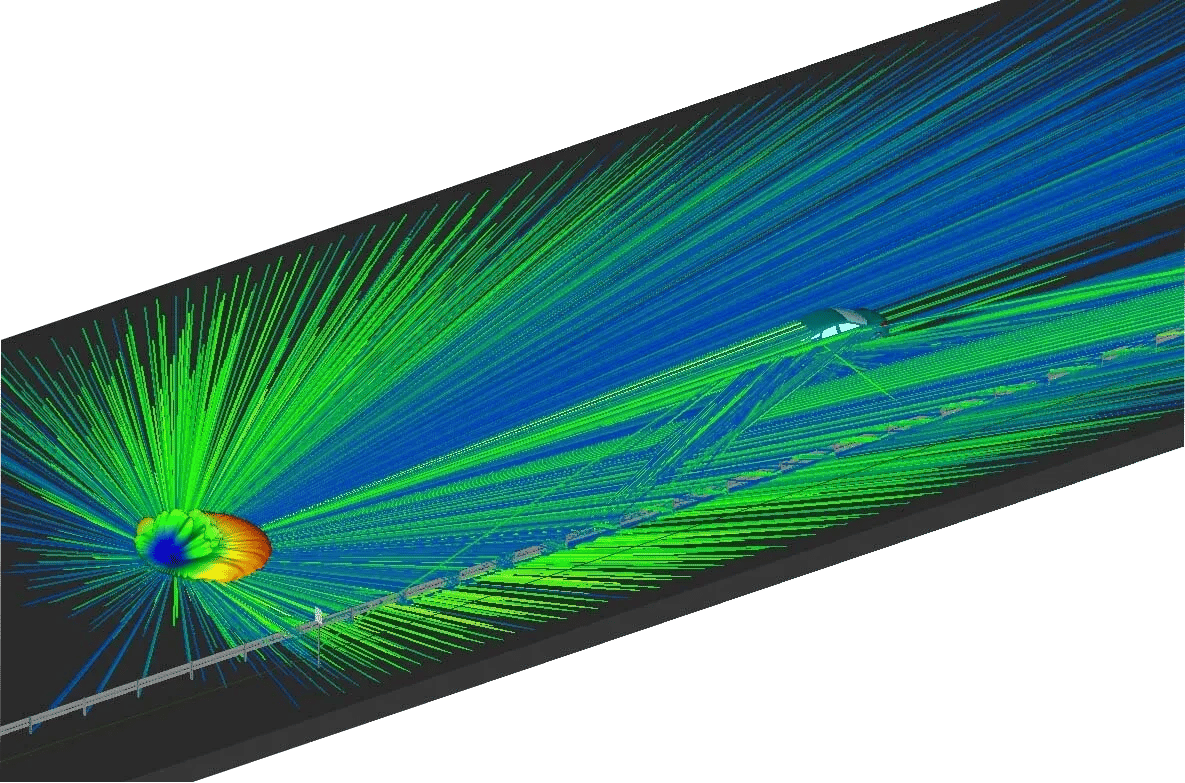
To augment WaveFarer’s calculations of multipath and target scattering, the diffuse scattering model further increases the fidelity of the simulation by revealing how paths interact with rough surfaces, leading to additional clutter in radar returns. Derived from theory to capture the effects of surface variations that are considered rough compared to a wavelength, but smaller in scale than the level that is typically included in physical models of terrain or structures, these effects become increasingly important for millimeter wave bands, common for radar simulation applications.
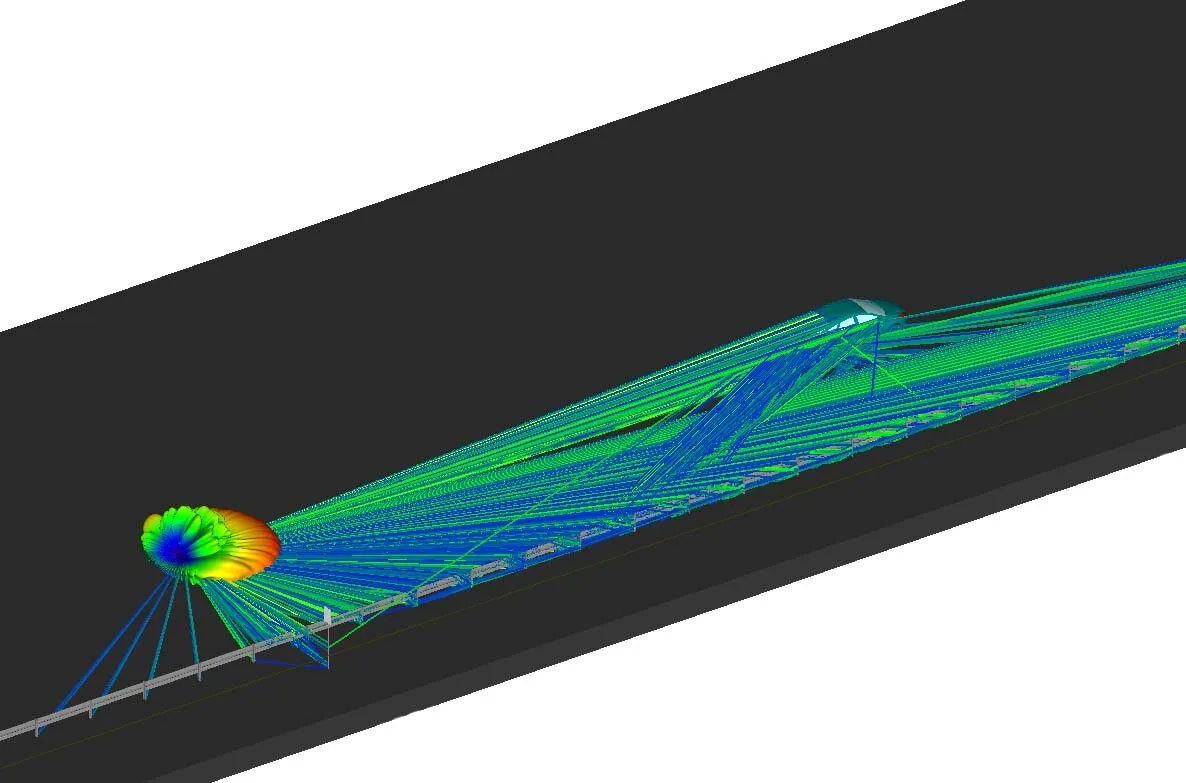
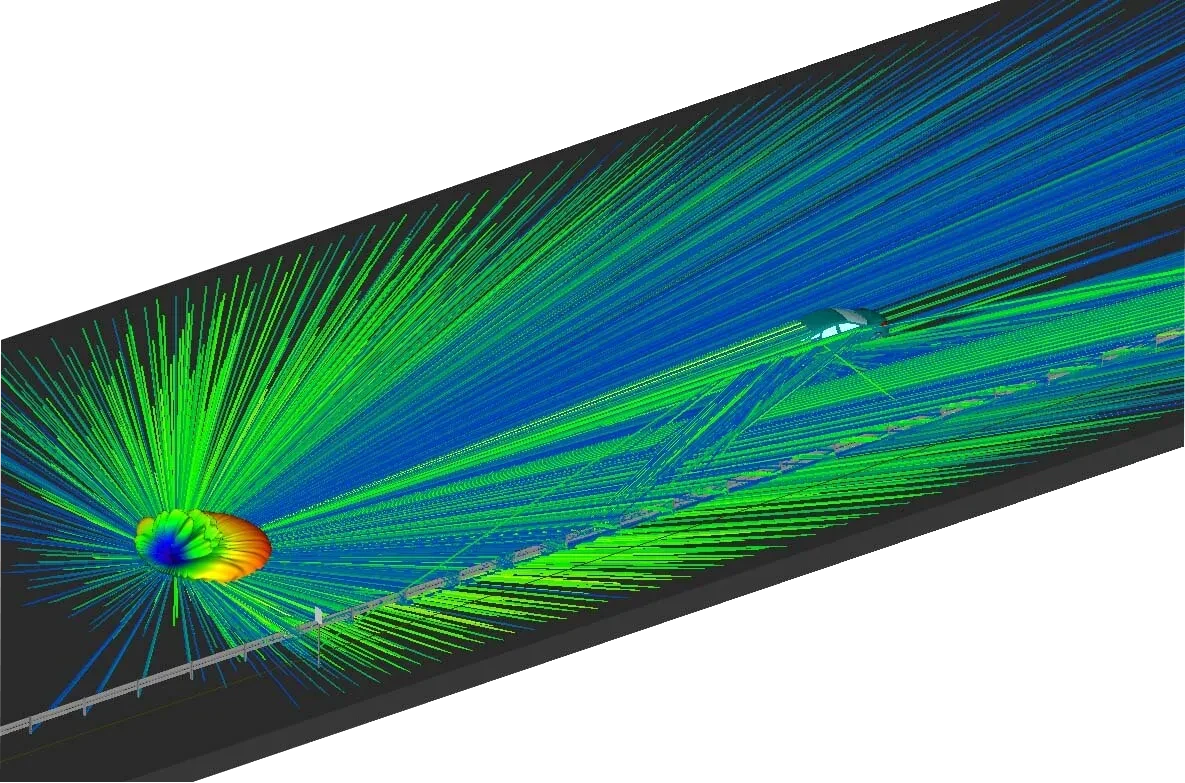
Diffuse scattering adds significantly more backscatter from the rough road surface.
Effects for Radar Simulation
Key effects from diffuse scattering, such as the introduction of additional clutter to the complex impulse response and increased cross-polarization of received signals, can be incorporated into radar scattering simulation results.
The advantages of Remcom’s diffuse scattering solution include:
-
Innovative ray-tracing to capture multipath to and from rough surfaces
-
Full integration across surfaces to handle varying illumination and blockage
-
Scattering of paths in all relevant directions
-
Handling of relative phase, supporting arrays and Doppler post-processing
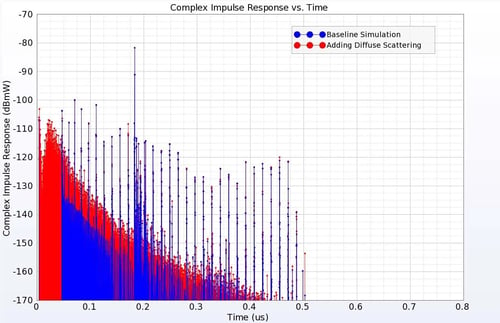
Complex impulse response with diffuse scattering returns included (red).
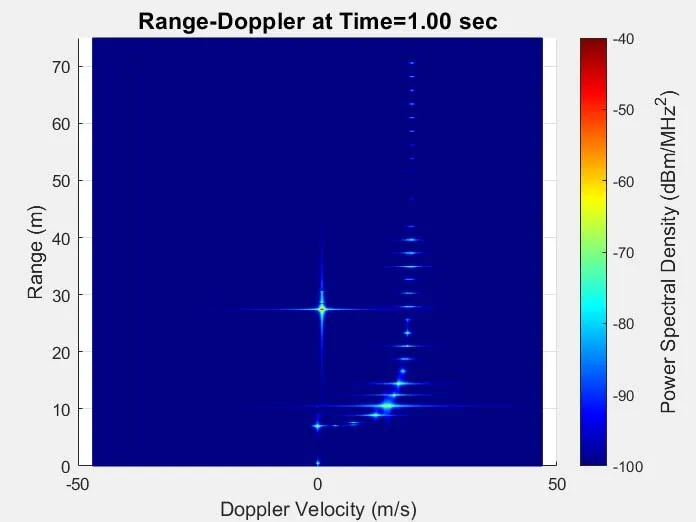
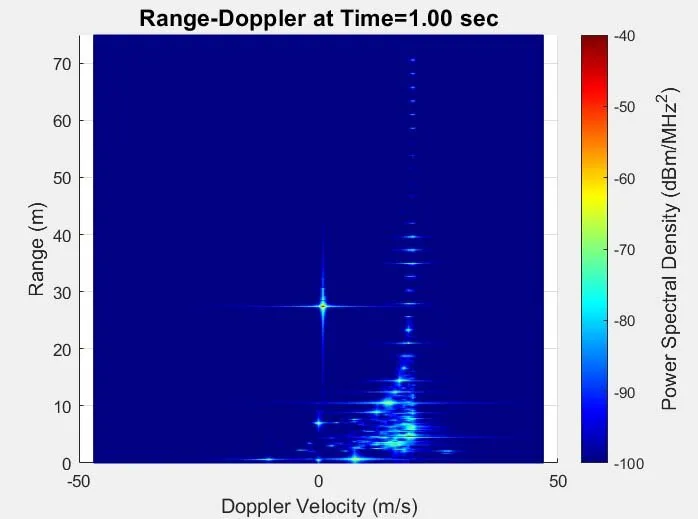
Diffuse scattering adds additional clutter, noticeable in the lower right portion of the plot,
comparing the baseline (left) to the case with Diffuse scattering from the road (right).
Effects of Scattering on Range-Doppler
The diffuse scattering capability has been carefully implemented to properly account for the shifting of phase during dynamic drive test scenarios with moving vehicles. Although phase from diffuse scattering is random in nature, the relative phases as objects are moving through a scene should still be consistent from time step to time step. Because WaveFarer’s implementation maintains this consistency, results can be post-processed to calculate additional information such as the I&Q or range-Doppler, using post-processing tools such as WaveFarer’s chirp post-processing scripts and utilities.
When diffuse scattering is enabled, results can incorporate the effects on radar clutter within these types of calculations. The figure below shows the additional contributions to range-Doppler when diffuse scattering from a rough road surface is included, compared to the initial simulation that incorporates only standard interactions and scattering from objects in the scene.
For More Information:
The diffuse scattering model is available in the Standard and Automotive Radar versions of WaveFarer.
Return to the WaveFarer main product page to explore more about the software's features and technology for fast and accurate analysis of repeatable drive test scenarios.
Save time and reduce costs.
Contact Remcom today for a customized solution to your most complex electromagnetic challenges.
Request a Quote